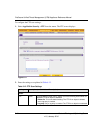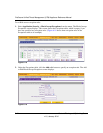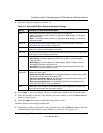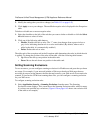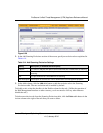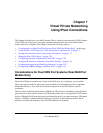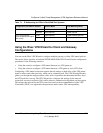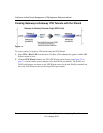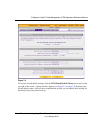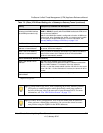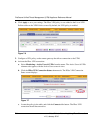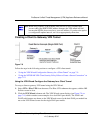
ProSecure Unified Threat Management (UTM) Appliance Reference Manual
7-2 Virtual Private Networking Using IPsec Connections
v1.0, January 2010
See “Virtual Private Networks (VPNs)” on page B-9 for more information about the IP addressing
requirements for VPNs in the dual WAN modes. For information about how to select and
configure a dynamic DNS service for resolving FQDNs, see “Configuring Dynamic DNS” on
page 3-19. For information about WAN mode configuration, see “Configuring the WAN Mode
(Required for Dual-WAN Port Models Only)” on page 3-9.
The diagrams and table below show how the WAN mode selection relates to VPN configuration.
Table 7-1 summarizes the WAN addressing requirements (FQDN or IP address) for a VPN tunnel
in either dual WAN mode.
Figure 7-1
Figure 7-2
Table 7-1. IP Addressing for VPNs in Dual WAN Port Systems
Configuration and WAN IP address Rollover Mode
a
Load Balancing Mode
VPN “Road Warrior”
(client-to-gateway)
Fixed FQDN required FQDN Allowed (optional)
Dynamic FQDN required FQDN required
Rest of
UTM
Functions
UTM
WAN Port
Functions
UTM
Rollover
Control
Dual-WAN Port Model
WAN 1 Port
WAN 2 Port
Internet
Same FQDN required for both WAN ports
WAN Auto-Rollover: FQDN Required for VPN
Rest of
UTM
Functions
UTM
WAN Port
Functions
Load
Balancing
Control
Dual-WAN Port Model
WAN 1 Port
WAN 2 Port
Internet
FQDN required for dynamic IP addresses
WAN Load Balancing: FQDN Optional for VPN
FQDN optional for static IP addresses



